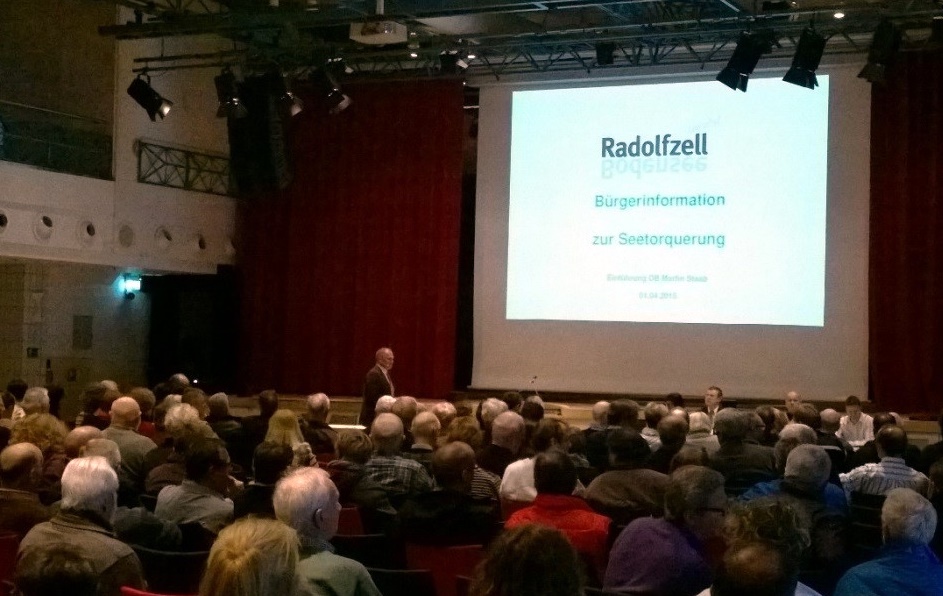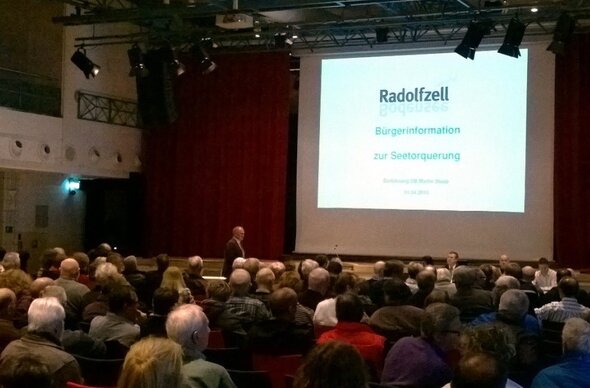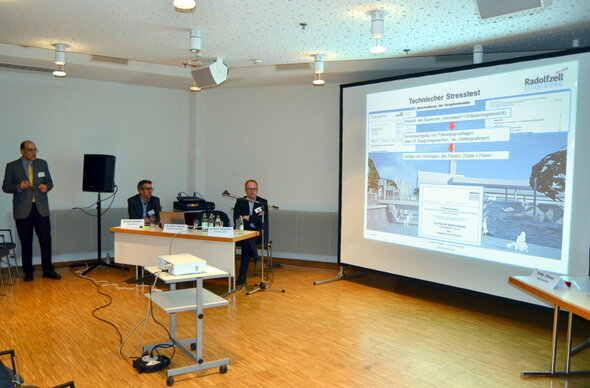KREBS+KIEFER involved with citizen information about the Seetor crossing in Radolfzell
On 1 April there was a citizen information event in Radolfzell regarding the Seetor crossing, a connection between the lake front and the historic old town which was challenging in many ways. The underpass construction underneath the tracks of the DB railway system is implemented as a jointless reinforced concrete construction with a length of approximately 90m. The overpass construction for the two DB stretches 4000 and 4330 are planned as steel trough cross sections with thick track plate.
On 1 April there was a citizen information event in Radolfzell regarding the Seetor crossing, a connection between the lake front and the historic old town which was challenging in many ways. The underpass construction underneath the tracks of the DB railway system is implemented as a jointless reinforced concrete construction with a length of approximately 90m. The overpass construction for the two DB stretches 4000 and 4330 are planned as steel trough cross sections with thick track plate.
The construction project was presented in the plenary session by Mayor Martin Staab. The topics of financing, technology, alternatives, further development and design were then discussed in five parallel sessions in the form of information and discussion forums. Dr.-Ing. Ioannis Retzepis, Managing Director of KREBS+KIEFER GmbH, test engineer for construction engineering and technical EBA auditor, explained in the technology forum the tasks of the advanced technical and geotechnical testing and explained the optimisations implemented in the project with the aim of minimising the performance risk and thus achieving cost certainty with the project.
The city of Radolfzell and DB ProjektBau GmbH recognised early on, in the design planning stage, the benefits of the advanced technical and geotechnical testing with this project and commissioned Dr Retzepis and Mr Schmidt, Managing Director of KREBS+KIEFER GmbH and EBA assessor, to provide this service.
The final construction of the Seetor crossing, the necessary construction pits and, last but not least, the difficult subsoil conditions, were all very challenging. The massive thickness of the marine clay, over 20m, coupled with the very high groundwater level, had to be taken into account and resulted in the design being optimised in multiple stages. Another aspect which had to be taken into consideration was the fact that, in order not to interrupt the operation of the railway system throughout the construction period, the underpass was constructed in several phases and with the protection of a watertight bulkhead support system. A construction pit support with an upper reinforcement tier and a stiffening, injection spray grid at the bottom (back anchored) immediately beneath the base of the construction pit, provided the optimum solution.


